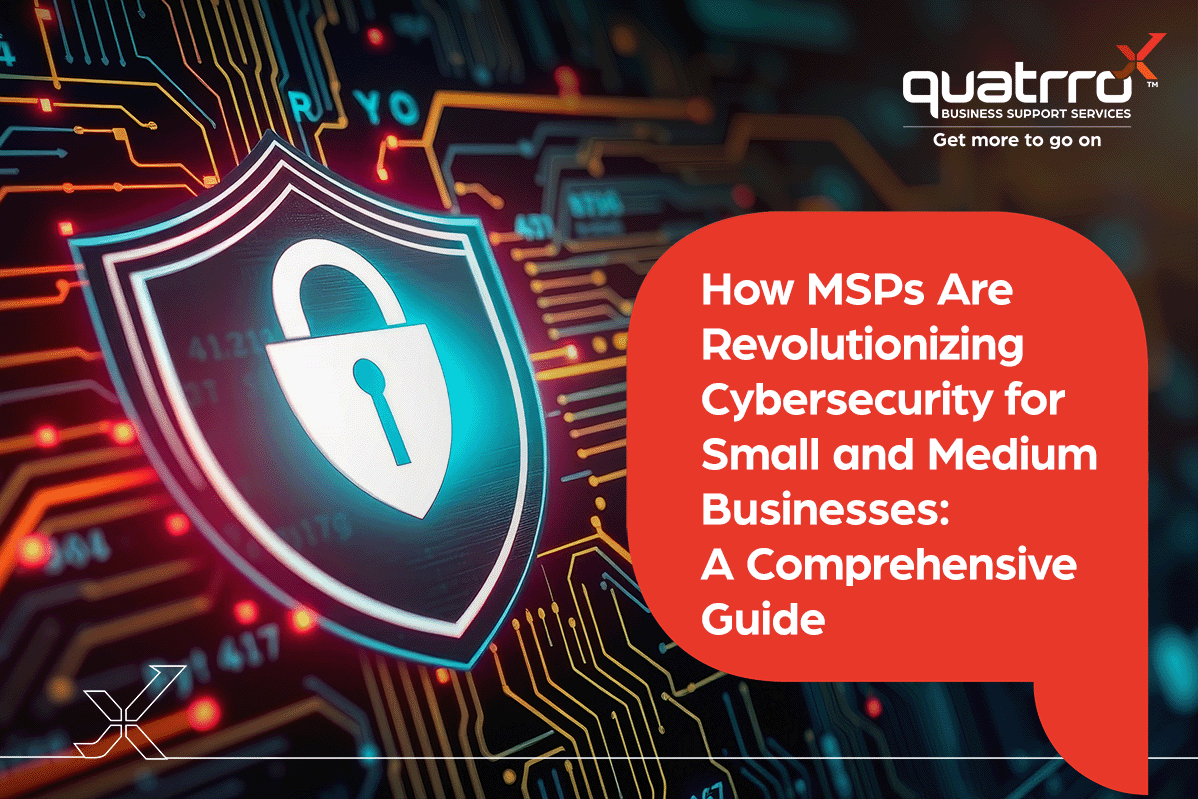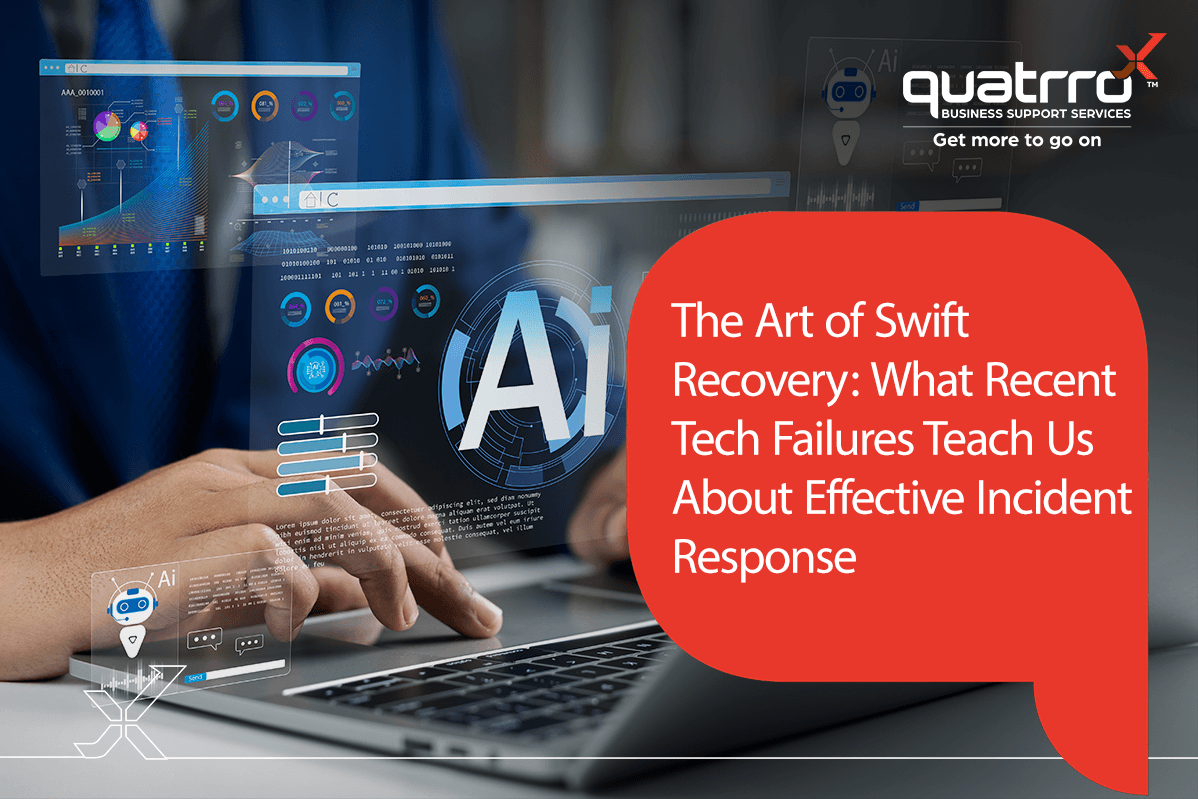Blog Details
How MSPs Are Revolutionizing Cybersecurity for Small and Medium Businesses: A Comprehensive Guide
February 10, 2025

In today’s rapidly evolving digital landscape, small and medium-sized businesses (SMBs) face an unprecedented challenge: maintaining robust cybersecurity while embracing digital transformation. As these organizations adopt cloud technologies, artificial intelligence (AI), and robotic process automation (RPA) to drive growth, they become increasingly vulnerable to cyber threats. This comprehensive guide explores how Managed Service Providers (MSPs) are helping SMBs navigate these challenges and build stronger cyber defenses.
Why are SMBs so vulnerable? Many operate under the misconception that their relatively “minor scale” makes them unlikely targets for cybercriminals. This false sense of security, combined with limited resources, often leads to:
MSPs leverage artificial intelligence to:
MSPs help SMBs prepare for and recover from security incidents through:
A crucial component of MSP services includes:
The Growing Cybersecurity Crisis for SMBs
The statistics are sobering: according to recent reports, small businesses account for 43% of all cyberattacks annually, with an average loss of $25,000 per attack. Even more concerning, the 2023 Hiscox Cyber Readiness Report reveals that small businesses in the US paid over $16,000 on average in ransom payments, with only 50% successfully recovering their data after paying that sum.Why are SMBs so vulnerable? Many operate under the misconception that their relatively “minor scale” makes them unlikely targets for cybercriminals. This false sense of security, combined with limited resources, often leads to:
- Reliance on basic firewalls and antivirus applications
- Outdated software and weak password practices
- Inadequate employee training and awareness
- Budget constraints limiting access to advanced security solutions
- Budget constraints limiting access to advanced security solutions
- Lack of specialized cybersecurity personnel
How MSPs Transform SMB Cybersecurity
The transformation of SMB cybersecurity through Managed Service Providers (MSPs) represents a fundamental shift in how small and medium businesses approach digital security. Through a combination of advanced technologies, expert knowledge, and comprehensive service offerings, MSPs are revolutionizing the security landscape for organizations that previously lacked access to enterprise-grade protection.1. Proactive Threat Detection and Mitigation
Proactive threat detection and mitigation have become essential for protecting businesses from increasingly sophisticated cyberattacks. Rather than waiting to respond to security breaches after they occur, MSPs implement comprehensive monitoring and analysis systems that work continuously to identify and neutralize potential threats before they can cause damage. This forward-thinking approach combines advanced technologies with expert analysis to provide multiple layers of protection. This includes:- Centralized Log Management: Aggregating data from multiple sources to provide a unified view of network activities
- Security Information and Event Management (SIEM): Analyzing patterns to identify potential threats in real-time
- Automated Correlation: Using machine learning (ML) to detect unusual behaviors and potential security incidents
2. Advanced Security Solutions
Modern MSPs deliver sophisticated, multi-layered security services combining endpoint protection, network monitoring, access management, cloud security, and encryption—creating a robust defense shield against evolving cyber threats:- Endpoint and Network Security: Continuous monitoring of all devices and network traffic
- Identity and Access Management (IAM): Implementing multi-factor authentication and role-based access controls
- Cloud Security: Ensuring secure cloud infrastructure with regular vulnerability assessments
- Zero-Trust Architecture: Following the “never trust, always verify” principle
- Data Encryption: Protecting both data at rest and in transit
3. AI-Powered Security Innovations
As cybersecurity threats become increasingly sophisticated and widespread, MSPs must evolve beyond traditional security measures. The integration of AI into security operations represents a critical advancement, enabling proactive threat management and automated response capabilities. AI-powered security solutions allow MSPs to protect their clients’ assets more effectively while reducing manual intervention and response times.MSPs leverage artificial intelligence to:
- Implement auto-healing solutions that identify and remediate threats automatically
- Analyze threat patterns and predict potential security risks
- Enhance detection and response capabilities through machine learning
- Provide continuous adaptation to emerging threats
4. Comprehensive Incident Response and Recovery
Managing security incidents requires a well-defined strategy for rapid detection, response, and system restoration. MSPs establish systematic protocols covering initial incident identification through full recovery, ensuring minimal disruption to business operations.MSPs help SMBs prepare for and recover from security incidents through:
- Detailed incident response plans
- Regular data backups and disaster recovery solutions
- Post-incident analysis and system restoration
- Continuous monitoring and system updates
5. Employee Training and Awareness
In an era where employees are often the first line of defense against cyber threats, effective security awareness training is critical. While MSPs deploy advanced technical solutions, the human element remains a potential vulnerability that must be addressed through comprehensive education and skill development.A crucial component of MSP services includes:
- Cybersecurity awareness training
- Phishing attack prevention education
- Best practices for password management
- Safe internet usage guidelines
- Shadow IT risk awareness
Best Practices for SMBs Working with MSPs
To maximize the benefits of working with an MSP, SMBs should:- Work with their MSP to conduct regular security assessments
- Maintain open communication about security concerns and incidents
- Ensure all employees participate in security awareness training
- Collaborate with their MSP to keep software and systems updated
- Regularly review and update security policies
- Partner with their MSP to monitor compliance with industry regulations
The Future of SMB Cybersecurity
As cyber threats continue to evolve, MSPs are positioning themselves at the forefront of innovation in cybersecurity. They’re investing in advanced technologies like AI and machine learning while maintaining a human-centric approach to security. This combination allows SMBs to focus on their core business while enjoying enterprise-grade security protection.Conclusion
In an increasingly interconnected digital world, cybersecurity is no longer optional for SMBs. By partnering with experienced MSPs, small and medium businesses can access the expertise, tools, and protection they need to thrive in the digital age. The right MSP partnership can transform cybersecurity from a daunting challenge into a strategic advantage, enabling SMBs to confidently pursue digital transformation while maintaining robust security postures.Latest Insights
Related Blogs
Contact Us







